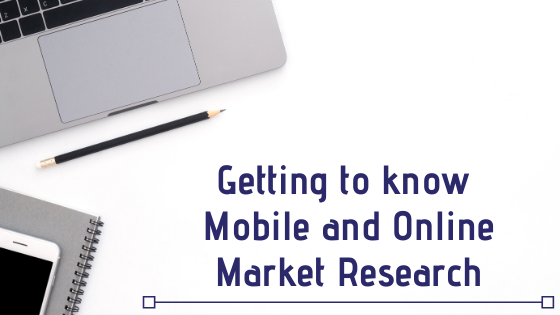
The continuous quest of market research industries to find more cost-effective and efficient approaches for data gathering and analysis resulted in the birth of online research. The development of best practices for online sampling and data collection allowed researchers, consultants, and corporate users to adapt their offline research methods to online.
The growing online market research was soon followed by the birth of mobile market research because of the smartphone revolution. What started as an additional option for data collection is now becoming an ubiquitous solution in the research industry. Because more and more people are surfing from mobile devices, their need to go for stationary web is also decreasing. This has resulted in dramatic changes in the realm of retail. In fact, according to a study conducted by RetailMeNot in March of last year, 69% of respondents said they would look for product reviews on their phones first and 53% would search for deals before even speaking with a store associate. This is just a proof of mobile telephone’s ongoing strong penetration rate.
What are online and mobile market research methodologies?
Online market research methodology connects businesses with consumers via their websites. Mobile research methodology, on the other hand, does the same thing but through smartphones. Both methods have proven to be superior than traditional research methods due to their reach and scale, provided that they be used accordingly.
What are the key elements to take into consideration?
-
 Target Audience
Target Audience
Despite the global reach of the smartphone era, its strength is mostly targeted on reaching the younger generation or hard-to-reach business professionals who are always on the go. The accessibility and portability offered by smartphones make it easier for them to check emails and to connect with people. On the other hand, reaching online through personal computers are generally better and more cost-efficient when reaching out to broader samples.
-
 Response Rates
Response Rates
Working on a market research means following a particular schedule provided by your client. This means that you don’t solely get to decide how long a survey or an online community will run. There has to be a deadline. Having said that, if you have a shorter turnaround time to gather responses from respondents, you should opt for a more efficient means to do so.
And according to studies, an average email open rates hover around -25% with a click-through rate of 2-3%. Mobile reaction rates (percentage of those who click on a push notification) are -18%. While these are broad industry averages, mobile has the edge in engaging with a higher number of potential respondents.
-
 Depth of Response
Depth of Response
Online has the edge in terms of the amount of data gathered in a single survey, especially if it is lengthy or wordy. This is because respondents using their mobile phones don’t usually have the patience to read through long blocks of survey questions and the interface is not ideally suited for complex questionnaires or long response attributes. However, if your aim is to gather insights from specific places, or capture images, sound recordings, and videos from a customer’s perspective, mobile is definitely a better option. Approaches such as mobile ethnography are able to provide an additional layer of efficient insight sharing for customers more than online can deliver.
-
 Stimuli Presentation
Stimuli Presentation
Online introduced a whole new means of testing visual stimuli and getting it out to a broader audience. Marketing concepts and ideas are better presented online where the quality of the image or the video is at its best. While mobile supports visual stimuli, it may not always be the most appropriate to use due to its small screens which can ultimately affect the viewing experience of your respondents.
-
 Methodology
Methodology
Mobile is bringing a whole new depth to qualitative research through its in-the-moment capabilities. Capturing your respondent’s true sentiments is made easier through location-infused solutions like GEO-fencing and GEO triggering that will automatically start or run when respondents visit specific stores, venues, or locations.
On the other hand, data-heavy methodologies are not always appropriate for mobile because an online platform is much capable in terms of running more advanced methods such as discrete choice or conjoint modeling.
-
 Sample Quality
Sample Quality
Whether it is online or mobile, using a reliable and reputable sample service provider is the first step to gathering a quality sample. Having said that, mobile has some advantages with duplication control. While online panels use cookies, or IP-based duplication protection, these are not foolproof, as a respondent intent on providing multiple responses have ways around them. Mobile control is stronger because individual device information is captured and is easier to flag.
In the end, know that online and mobile methodologies are certainly not mutually exclusive, and both should be a part of the market research toolbox like other traditional methods such as face-to-face interviews, focus group discussions, phone surveys, etcetera. After all, these are all reliable options and can be used as a combination depending on the region and the research objective.
Sources: greenbook.com, d8spring.com, emarketer.com, twentify.com


